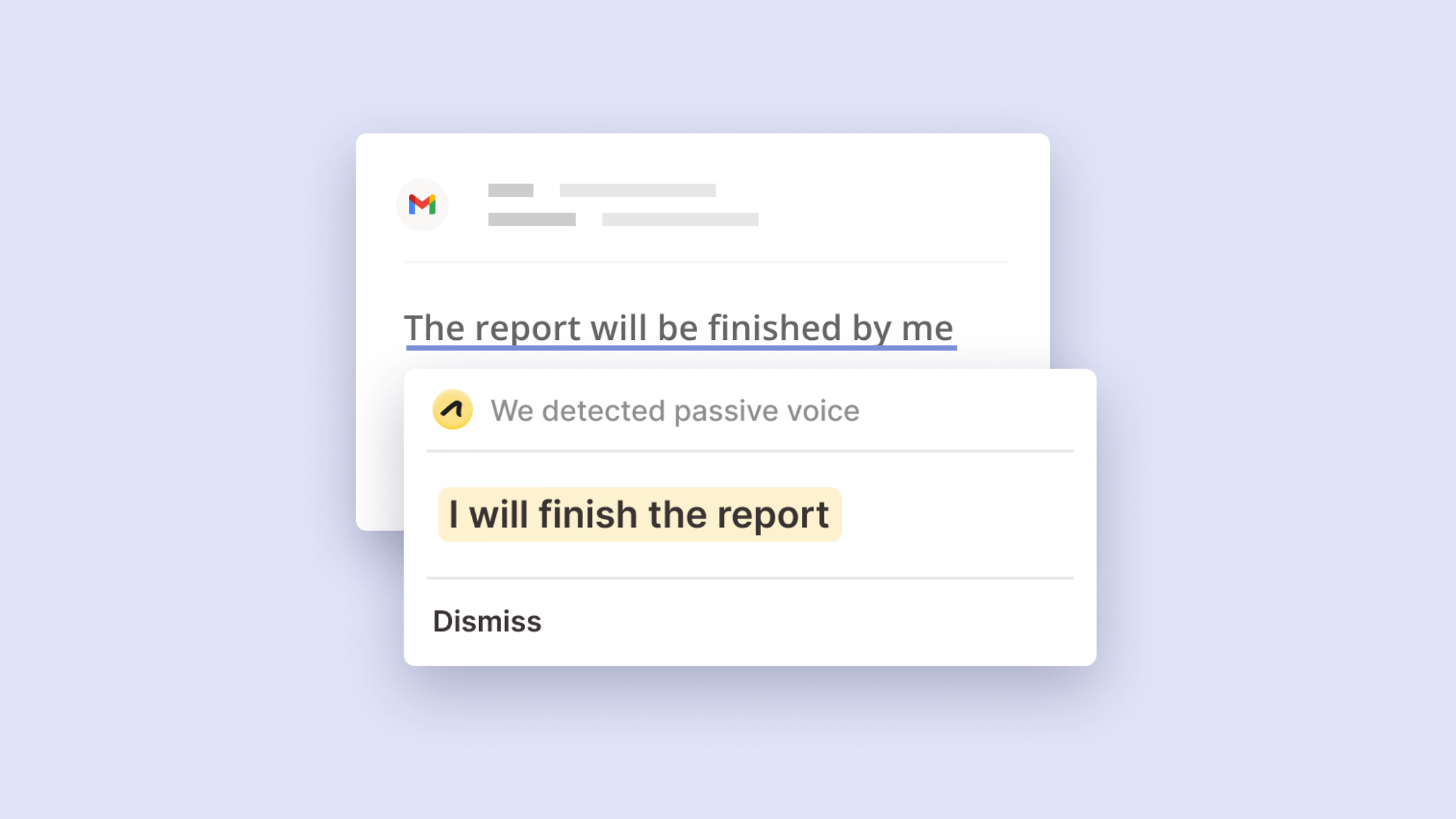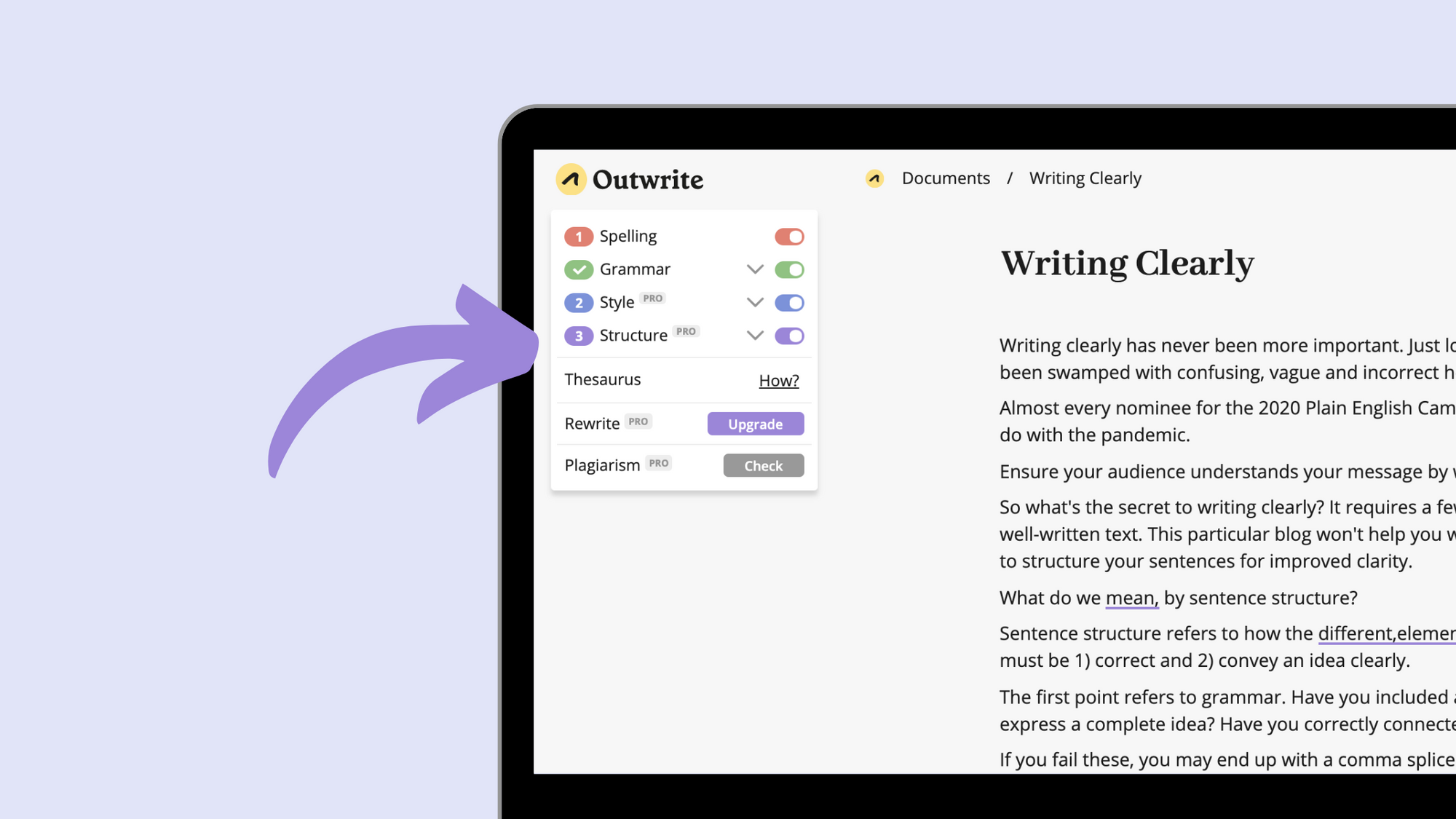Want to write clearer sentences? Try restructuring them
Find out how restructuring your sentences can improve the clarity of your writing.

Writing clearly has never been more important. Over the past 18 months, we've witnessed public health messages about COVID-19 that have been confusing, vague, and sometimes completely wrong.
In fact, almost every nominee for the 2020 Plain English Campaign's Foot in Mouth awards had something to do with the pandemic. Here's one of them:
And neither mass testing nor progress on vaccines – both vital arrows in our epidemiological quiver, both key parts of our fight against Covid – are at the present time a substitute for the national restrictions...
- Boris Johnson
No matter how much you like metaphors, it's imperative your audience understands exactly what you're saying.
So what's the secret to writing clearly?
It requires a few things: a solid idea, simple vocabulary, and well-constructed text. This particular blog won't help you with the first two, but we can offer advice on how to restructure your sentences for improved clarity.
What do we mean by sentence structure?
Sentence structure refers to how the different elements of a sentence are arranged. A good sentence must:
- be correct
- convey an idea clearly
The first point refers to grammar. Have you included a subject and a verb? Does your sentence express a complete idea? Have you correctly connected clauses in the same sentence?
If you fail these, you may end up with a comma splice or sentence fragment error. You can learn more about these grammar mistakes here.
How to restructure a sentence
Now that we've got the grammar stuff out of the way, let's look at 4 ways to restructure your sentences to convey ideas more clearly.
1. Change passive voice to active voice

We've mentioned passive voice on this blog several times now, and for good reason. Passive sentences tend to be harder to read than their active counterparts. They're wordier, longer, and less direct. This makes them an obvious enemy for copywriters and other professional writers.
To fix passive voice, first look for phrases where the subject is acted upon (hint: it usually includes the word "by").
The sandwich was eaten by Jason.
Then, switch the sentence around to make the subject perform the action. You may need to change the verb form to do this.
Jason ate the sandwich.
If you need a hand rewriting sentences in active voice, Outwrite Pro can do the hard work for you. It'll detect any instances of passive voice, then suggest ways to convert it.
2. Use parallel construction
It may sound complex, but parallel construction (or parallelism) is fairly straightforward. It recommends using the same grammatical pattern within a sentence or paragraph. This gives your writing a sense of balance, which makes it easier to read.
For example, if you use an infinitive at the start of the sentence, make sure every other verb takes the same form.
| Faulty parallelism | Correct parallelism |
|---|---|
| Chidi likes to swim, cycle, and go running. | Chidi likes to swim, cycle, and run. |
| Eleanor is neither a vegetarian nor is she a vegan. | Eleanor is neither a vegetarian nor a vegan. |
3. Avoid nominalizations
This is another fancy word with a simple meaning. Nominalizations are verbs or adjectives that have been turned into nouns. They often have suffixes like "-tion" and "-ment".
Nominalizations often pop up in academic writing because they sound formal. However, overusing them may decrease your readability score, and increase your word count.
Simplify your sentences by using strong, precise verbs instead. Here's an example:
Original: The introduction of a mandatory face mask policy led to a reduction in community transmission of COVID-19.
Alternative: Introducing a mandatory face mask policy reduced community transmission of COVID-19.
4. Don't use no double negatives

In the scene above, Bart Simpson writes, "I won't not use no double negatives". It's an extreme, but powerful reminder of why we should be careful about using multiple negatives in our writing. They may confuse your reader, and often cancel each other out.
To correct a double negative, either change a negative word or simplify the phrase.
| Incorrect | Correct |
|---|---|
| She didn't tell no one where she was going. | She didn't tell anyone where she was going. |
| Skipping breakfast is not uncommon. | Skipping breakfast is common. |
| Harper did not have neither her phone nor her purse. | Harper did not have her phone or purse. |
Restructure sentences with Outwrite Pro

If you've visited the Outwrite Editor recently, you may have noticed a new category called "Structure". These Pro suggestions will help restructure your sentences to make them easier to understand. They may recommend:
- converting a phrase into active voice
- adding or removing a comma
- splitting a sentence in two
- changing word order
You can also use our AI paraphrasing tool to shorten and restructure sentences. Just head to our site to start your free trial of Pro!

